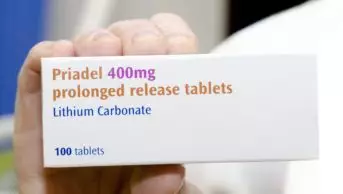
Courtesy of British Generic Manufacturers Association
With the end of the Brexit transition period less than 100 days away, drugs manufacturers are once again gearing up for a crash landing outside the EU.
Under the government’s ‘reasonable worst-case scenario’, between 30% and 50% of trucks importing goods — including medicines — might not be ready to meet the new rules for border crossing by 31 December 2020. The government said there could be queues of up to 7,000 trucks in Kent with delays of two days.
For Warwick Smith, director general of the British Generic Manufacturers Association (BGMA), the concern around making sure that trucks have the right paperwork when they arrive at a port remains the same as last year.
What has changed, however, is the government’s clearer, more flexible guidance on stockpiling medicines that have taken a hit to their supply chains because of the COVID-19 pandemic.
The Pharmaceutical Journal interviewed Smith, who speaks on behalf of generics manufacturers accounting for 85% of the total UK generic market by volume, to find out how manufacturers are planning to juggle the next phase of Brexit, alongside the threat of another spike in COVID-19 cases, and what the government can do to help out.
How have preparations for a no-deal Brexit changed for manufacturers this time around compared to last year?
The Department of Health and Social Care has asked us to have six weeks’ supply rather than an additional six weeks’ supply, which recognises that, for some companies, and for some products, ramping up production beyond what they’re already doing is really difficult.
The volumes for specific medicines that companies were producing during the height of the pandemic, particularly intensive care medicines, was such that the barrel is now dry. All those stocks of active pharmaceutical ingredient (API) they had have been used and they’re having to be replenished — at a time when India is at its peak of the pandemic. Having been remarkably resilient during the height of the pandemic, that has taken away some of the factors that allowed us to be resilient.
You mentioned a distinction between the government’s ask for an additional six weeks’ supply versus just six weeks’ supply. Can you explain that difference?
The guidance overall is to put in place a range of measures that manufacturers think best enable them to cope
We’re being less specific this time around than we were last time around. The guidance overall is to put in place a range of measures that manufacturers think best enable them to cope.
For lots of medicines — which weren’t in great demand during the height of the pandemic — you’re going to see the similar sort of stockpiles as you did last time around. For those that were under more pressure, we’re seeing two things: the government doing its own stockpiling; and companies putting in place measures that mean they can get those products in to the UK, even if they’re not available now. It’s a much more diverse way of looking at the ‘end of transition’ period.
How did generics manufacturers adapt their supply chains to cope with the demand of COVID-19 patients?
If we focus principally on intensive care medicines, where the big push-pull was, the vast majority of those are generics. What wasn’t appreciated at the time was that the volumes that are typically used are quite low and the result is comparatively few suppliers of those medicines. But, during the pandemic, the demand went through the roof. We had one company, with one product, sell what they would normally sell in 12 months in 2 weeks. And they only manufacture one batch per year.
Some manufacturers stopped manufacturing other medicines to run these intensive care drugs on their production lines, which of course then has a knock-on effect on the other medicines.
With everybody pulling together, we made sure that sufficient supplies were available
No patient failed to get intubation when they needed it because the medicines weren’t available. It was a bit close on occasions. But with everybody pulling together, we made sure that sufficient supplies were available.
We reported that Accord moved the manufacture of hydroxychloroquine to the UK. Are we going to see more of this in response to the pandemic?
This is a slightly nuanced argument. The supply chain showed great resilience under really difficult circumstances, but that doesn’t mean we can’t do better to increase resilience. The government has set up Project Defend, which is an overall review of supply chain resilience, not just on medicines. We’ve been doing our own work and there are two or three important things that have come out. Supply chain resilience is not just about building factories in the UK. In fact, if all the factories were in the UK and the UK had a problem, that would be no use at all. What we need is diversity.
Maybe we need to look at procurement and invest more in companies that have more resilient supply chains
Hospitals buy the cheapest product but it costs money to have more than one API supplier on your licence. So maybe we need to look at procurement and invest more in companies that have more resilient supply chains.
In terms of regulation, it gives you a massive disincentive to hold a product licence for a product that you’re not manufacturing at the moment. But that’s a resource which, if there’s difficulty, can be switched on quickly. So, it’s not just about building factories — we need a much broader look around supply chain resilience.
Are companies now looking at diversifying their API production?
We are talking to the government quite intensively about trying to get a programme of measures, which would make it easier for companies to do that. And part of it does come down to procurement. If manufacturers are going to increase their cost base, and they don’t sell the product because the NHS has bought a cheaper one from somebody who has got a less firm supply chain, actually, you’re not going to do that. This is a shared responsibility that we need to work together on.
If it’s just about price, you’ll get cheap medicines. But when the excrement hits the air conditioning, you might find we’re less able to step up than if we’d had a broader view of value.
You mentioned the hard work that everyone put in to secure the supply chain early in the pandemic — would you be able to replicate that in the event of another spike?
The government is looking at stockpiling the really critical medicines, which we didn’t have last time
Yes, I think so. The government is looking at stockpiling the really critical medicines, which we didn’t have last time. So that’s another bit of security.
How are manufacturers recovering the costs associated with the pandemic?
I don’t see the data directly, but I’m told by the NHS that there was a very limited increase in prices. Most manufacturers took the view that this was a shared responsibility and there were very few examples of people making the most of it. Sure, costs went up; I’m sure prices will have gone up. But they were relatively modest increases, as I understand.
But concessionary costs spiked in April to about £25.4m. Was that because of price increases by manufacturers? Or does the responsibility lie elsewhere?
One of the problems that we had was that the factories in India and China didn’t keep going during the pandemic. So, there was a shortage of API and some finished dosage form product coming out of India and China, which would have led to shortages and an increase in prices.
Once the government was aware of that, they actually got a resolution passed by the G20 — of which India is a member — saying they shouldn’t lock down their ports or internal borders for medicines.
In India, a lot of their manufacturing plants rely on casual labourers, who tend to be young men who come from their villages, are put up in barrack block-type accommodation, work for a couple of years and then go home. Obviously, if they’re not going into work they just go home. So, when the factories opened up again, the labour wasn’t there. Some of our companies were hiring coaches to bus them to the plant.
The problems with active pharmaceutical ingredient production were not just for COVID medicines; it was across the piece
But the problems with API production were not just for COVID medicines; it was across the piece.
Has there been any movement on the government’s plans to consult over the use of generic price limiting powers?
No. There was a consultation, which has now finished, but the government hasn’t yet released its conclusion. That was to change the way in which Category A prices are set. The consultation was a broad one with all stakeholders. There then has to be a more detailed one with the Pharmaceutical Services Negotiating Committee.
Are manufacturers taking advantage of the fact that that’s been delayed?
This is one where we quite often get blamed for Category A prices and it’s not our fault. They’re not based on actual prices, as category M prices are, they’re based on price lists of wholesalers and manufacturers. And we were, therefore, supportive of the change that the reimbursement price would be based on actual prices.
You may also be interested in

Competition watchdog launches investigation into discontinuation of bipolar drug

Health bodies make ‘urgent’ call to Matt Hancock to intervene in the proposed withdrawal of bipolar drug
